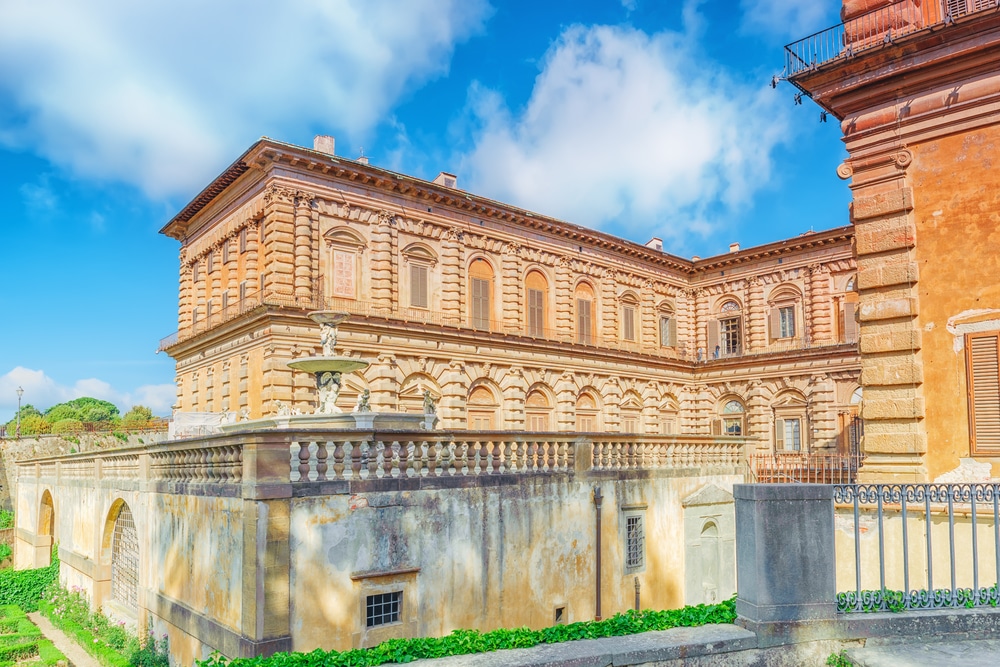Palazzo Pitti

The first owner was Luca Pitti
Palazzo Pitti enjoys a special rank among the sights in Florence. If you want to visit the palace and its museums, you have to cross the Ponte Vecchio. That world-famous bridge that spans the mostly lazily flowing Arno River. The name of the building keeps alive the memory of its first owner: Luca Pitti. That was in 1458, and Pitti was a banker who dealt in nothing but money. A hundred years later, the Medici acquired this palace. The official buyer was Eleanor of Toledo, the wife of the Grand Duke Cosimo I.
Palace of the king for a few years
For almost two centuries, Palazzo Pitti was one of the control centers of power of this influential family, which disappeared from the consciousness of Florentines only when there were no more descendants. From then on, none other than the Austrian Emperor Francis I was the new owner of the palace, and when in the 19th century the city on the Arno was elevated to the rank of capital of Italy, Palazzo Pitti was even the residence of the regent. For some time Napoleon also lodged here during his rule over Italy. Finally, after World War I, the city of Florence became the owner of the building and later housed world-renowned museums there.
Evidence of a luxurious life
With its royal living quarters, the historic building still bears witness to the splendor and glory of that time. But also of the splendid existence of its former inhabitants. In the 25 rooms, the visitor can get an idea of what the luxurious life of that era in Florence was like. Of equal interest, however, are the extensive collections of paintings, sculptures and objects of various artistic styles. The museum complex is a destination of visitors from all over the world. The Galleria Palatina deserves special attention. It was the gallery of the Medici family in the Middle Ages. Today the works of Titian, Rubens, Raphael and Correggio are exhibited here.
The "Treasury of the Medici
The wealth of objects on display in the so-called costume gallery is also astonishing. Presented here are about 6,000 costumes from different periods of Florence and Italy. Some of these costumes and accessories come from the collections of important theaters. This is the only museum of its kind south of the Brenner. The Gallery of Modern Art is dedicated to paintings and sculptures in the period between the 18th century and the Second World War. The Silver Museum is in fact the "Treasury of the Medici". The super-rich family collected ivory vases, mosaics, crystals, porcelain from Japan and precious jewelry for centuries.
A garden with grottos and lakes
The Porcelain Museum and the Carriage Museum in Palazzo Pitti are also among the most important collections in Europe. The exhibitions in this historic setting are like a journey through contemporary history for visitors. The palace in the Oltrarno district is surrounded by the Boboli Garden, which extends over 45,000 square meters with its numerous fountains, lakes, grottos and park-like green areas. Moreover, Palazzo Pitti is connected to Palazzo Vecchio by a walkway, the Vasari Corridor. It dates back to Roman times and was completed as early as 1218. The facade of the palace was covered with the boulders from the quarry of the Boboli Garden.